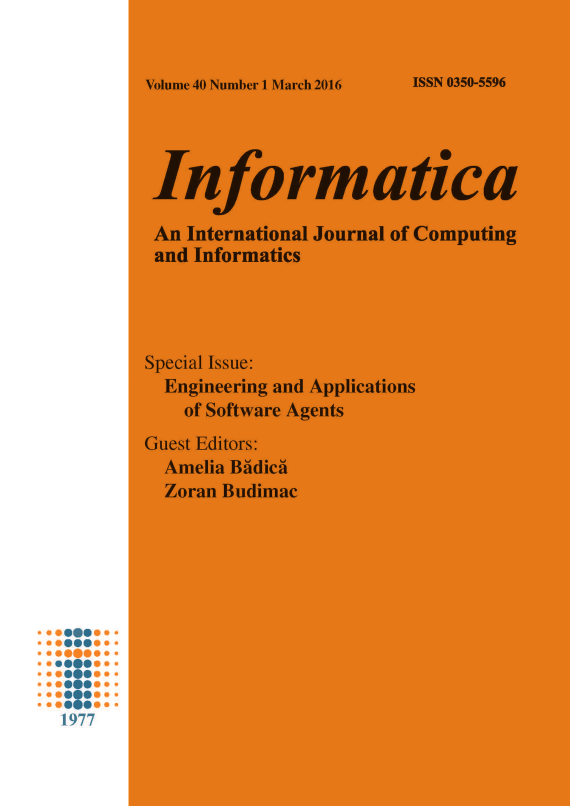PCARD platform for mHealth monitoring
Abstract
The introduction of information and communication technologies (ICT) into the integrated healthcare system could increase the self-management of health and therefore increase the efficacy and decrease the costs of overall health management. A personal mobile health monitoring system (PCARD) has been developed, which uses moderately-priced and user-friendly technological solutions, e.g. wireless body sensors for data acquisition, advanced algorithms for data analysis, widely available smart phones for visualization of measurements, and the existing communication infrastructure for data transfer. The solution is unobtrusive, works with existing devices, and provides useful information to both direct users and to the health care system. The PCARD system starts with measurement of ECG signal that incorporates significant information about the global health state. It then continues with display of the signal and its analysis on a personal terminal, such as smartphone and on Cloud-based storage, processing, and visualization software. Four pilot studies have been designed to validate to which extent the continuous measured ECG data could contribute to improved quality and efficiency of the healthcare. Also, the level of safety and reliability, the acceptance from users, and the potential for commercialization will be validated in the scope of the pilots.References
Lobodzinski S. S. (2013). ECG patch monitors for assessment of cardiac rhythm abnormalities. Progress in Cardiovascular Diseases, 56(2), 224–229. doi:10.1016/j.pcad.2013.08.006
"HealthVault." 2007. Accessed at https://www.healthvault.com/ on April 14, 2015.
Kališnik J M, Poplas-Ssusič T, Semeja A, Korošec T, Trobec R, Avbelj V, Depolli M, Stanič U. Mobile health monitoring pilot systems. Proceedings of the 18th International Multiconference Information Society - IS 2015, October 9th and 12h, 2015, Ljubljana, Slovenia. volume G.
Trobec R, Avbelj V, Rashkovska A, Multi-functionality of wireless body sensors. The IPSI BgD transactions on internet research. 2014;10:23-27.
Subbe C P, Kruger M, Rutherford P, Gemmel L, “Validation of a modified Early Warning Score in medical admissions”, Q. J. Med. 94, 521-526, 2001.
Miller R, “Rise of the machines: Computers construct new, better biomarkers”, theheart.org [Clinical Conditions > Imaging > Imaging], October 5, 2011. Accessed at http://www.theheart.org/article/1290375.do on February 3, 2012.
Esposito S et al., “Altered cardiac rhythm in infants with bronchiolitis and respiratory syncytial virus infection”, BMC Infect. Dis. 10, 305, 2010.
Trobec R, Rashkovska A, Avbelj V. Two proximal skin electrodes - a respiration rate body sensor. Sensors, 2012, vol.12, no. 10, pp. 13813-13828.
Gjoreski H, Rashkovska A, Kozina S, Luštrek M, Gams M. Telehealth using ECG sensor and accelerometer. Proceedings of MIPRO 2014, 37th International Convention, May 26-30, 2014, Rijeka, Croatia. pp. 283-287.
Zellerhoff C, Himmrich E, Nebeling D, Przibille O, Nowak B, Liebrich A., How can we identify the best implantation site for an ECG event recorder? Pacing Clin Electrophysiol 2000;23:1545–9.
Tomašić I, Frljak S, Trobec R, Estimating the universal positions of wireless body electrodes for measuring cardiac electrical activity. IEEE transactions on bio-medical engineering. 2013;60:3368-3374.
Rashkovska A, Tomašić I, Trobec R, “A telemedicine application: ECG data from wireless body sensors on a smartphone”, Proceedings of MEET & GVS on the 34th International Convention MIPRO 2011, Opatija, Croatia, May 2011, vol. 1, 293-296.
Trobec R, Avbelj V, Šterk M, Meglič B, Švigelj V. Neurological data measuring and analysis software based on object oriented design. Clinical autonomic research, 2005; 15; 173.
Kaireviciute D, Aidietis A, Lip GYH. Atrial fibrillation following cardiac surgery: clinical features and preventive strategies. Eur Heart J. 2009; 30: 410-25.
Kališnik J M, Avbelj V, Trobec R, et al. Effects of beating- versus arrested-heart revascularization on cardiac autonomic regulation and arrhythmias. Heart Surg Forum. 2007; 10: E279-87.
Ksela J, Suwalski P, Kalisnik J M, et al. Assessment of nonlinear heart rate dynamics after beating-heart revascularization. Heart Surg Forum. 2009; 12: E10-6.
Downloads
Published
Issue
Section
License
I assign to Informatica, An International Journal of Computing and Informatics ("Journal") the copyright in the manuscript identified above and any additional material (figures, tables, illustrations, software or other information intended for publication) submitted as part of or as a supplement to the manuscript ("Paper") in all forms and media throughout the world, in all languages, for the full term of copyright, effective when and if the article is accepted for publication. This transfer includes the right to reproduce and/or to distribute the Paper to other journals or digital libraries in electronic and online forms and systems.
I understand that I retain the rights to use the pre-prints, off-prints, accepted manuscript and published journal Paper for personal use, scholarly purposes and internal institutional use.
In certain cases, I can ask for retaining the publishing rights of the Paper. The Journal can permit or deny the request for publishing rights, to which I fully agree.
I declare that the submitted Paper is original, has been written by the stated authors and has not been published elsewhere nor is currently being considered for publication by any other journal and will not be submitted for such review while under review by this Journal. The Paper contains no material that violates proprietary rights of any other person or entity. I have obtained written permission from copyright owners for any excerpts from copyrighted works that are included and have credited the sources in my article. I have informed the co-author(s) of the terms of this publishing agreement.
Copyright © Slovenian Society Informatika








